We put the Asus ROG Phone 6 through our rigorous DXOMARK Audio test suite to measure its performance both at recording sound using its built-in microphones, and at playing audio back through its speakers. In this review, we will break down how it fared in a variety of tests and several common use cases.
Overview
Key audio specifications include:
- Two speakers (Top front and bottom side)
- 3.5mm jack audio output
- Dirac HD Sound
Scoring
Sub-scores and attributes included in the calculations of the global score.

Asus ROG Phone 6


 2nd
2nd 1st
1stPlayback
Cons
- Slightly too prominent upper bass compared to low-end extension
- Artificial bass distortion too intrusive, could do with fine-tuning
Recording
Pros
- Great timbre performance, rich and bright tonal balance
- Great spatial performance, especially impressive wideness
- Very good all-round recording performance
- Great wind noise reduction
Cons
- Zone around 10 kHz can be too prominent, especially with recorder app, resulting in hissing and aggressive sibilances
- No audio zoom
- Severe pumping in the low-end and poor results for max loudness measurements at high sound pressure levels
- Handling the device during recording can induce loud finger noises
With a DXOMARK Audio score of 155, the Asus ROG Phone 6 just misses out on the top spot in our ranking and earns itself an excellent second place. It also improves by four points over its already very good predecessor ROG Phone 5. Audio performance is impressive overall, especially in Playback. Some minor niggles, mainly in the Recording department, kept the Asus from making it to the very top.
As a playback device, the Asus shines — unsurprisingly for a gaming phone — especially when playing games. It’s also great for listening to music or watching movies, though, thanks to a rich and balanced timbre as well as excellent performances in the dynamics and spatial attributes. Audio artifacts are very well controlled as well. On the downside, our testers found slightly too much emphasis on the upper bass in relation to the low-end extension. Artificial bass distortion could do with some fine-tuning as well as our test listeners found it too noticeable.
When using the Asus for recording sound, it delivered the best results with the main camera but the front camera came very close. Results are slightly less convincing with the default recorder app. Still, overall recording performance was excellent, with great timbre, a rich and bright tonal balance, impressive wideness and good localizability of individual sound sources. Wind noise reduction was very effective as well. On the downside, the frequency zone around 10 kHz can be too prominent, especially with the recorder app, resulting in hissing and aggressive sibilances. There is also some room for improvement at high sound pressure levels where our testers noticed some recording artifacts, including fairly severe pumping in the low end, and objective measurements at maximum loudness are poor. Handling the device during recording can result in finger noises ending up in the audio files.
Test summary
About DXOMARK Audio tests: For scoring and analysis in our smartphone audio reviews, DXOMARK engineers perform a variety of objective tests and undertake more than 20 hours of perceptual evaluation under controlled lab conditions.
(For more details about our Playback protocol, click here; for more details about our Recording protocol, click here.)
The following section gathers key elements of our exhaustive tests and analyses performed in DXOMARK laboratories. Detailed performance evaluations under the form of reports are available upon request. Do not hesitate to contact us.
Playback
Asus ROG Phone 6
163
DXOMARK engineers test playback through the smartphone speakers, whose performance is evaluated in our labs and in real-life conditions, using default apps and settings.

Timbre
Asus ROG Phone 6
158
The Timbre score represents how well a phone reproduces sound across the audible tonal range and takes into account bass, midrange, treble, tonal balance, and volume dependency. It is the most important attribute for playback.
The ROG Phone 6 produced a rich and balanced timbre that put a slight emphasis on the upper bass. Compared to the very best competitors, there was a slight lack of high-end extension, but midrange restitution was smooth and natural. The excellent timbre results extended to the bass region where the Asus offered very good rendition. There was a satisfying amount of upper bass that on some occasions could verge onto the slightly excessive and the distortion used to generate virtual bass is a bit too much. Compared to the best, low-end extension could reach a touch deeper.
The tonal balance remained very nice at low volumes where the right amount of bass and a clean treble offered a pleasant listening experience. At maximum volume, too much emphasis was put on the high midrange, which resulted in a slightly aggressive sound.

Dynamics
Asus ROG Phone 6
149
The Dynamics score measures the accuracy of changes in the energy level of sound sources, for example how precisely a bass note is reproduced or the impact sound from drums.
The ROG Phone 6 did very well for dynamics, delivering sharp and precise attacks that were only slightly impaired by distortion at the maximum volume setting. Great low mid-energy resulted in a powerful punch that was consistent across all volume levels. Bass precision was very good, too, despite a subtle lack of low-end extension hindering sustain. Only at maximum volume was a subtle compression creeping in.
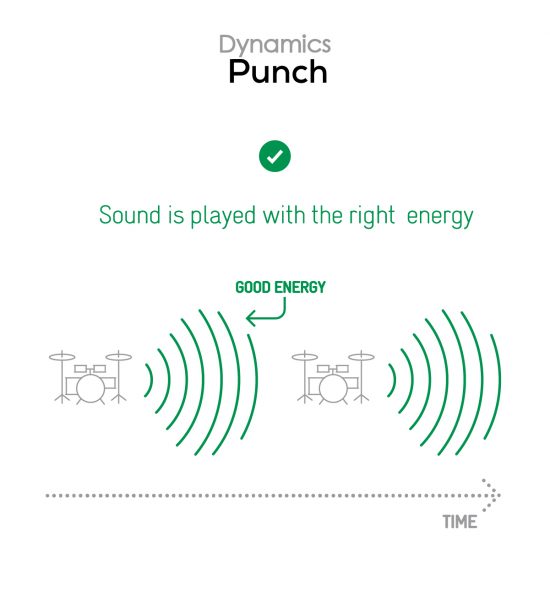
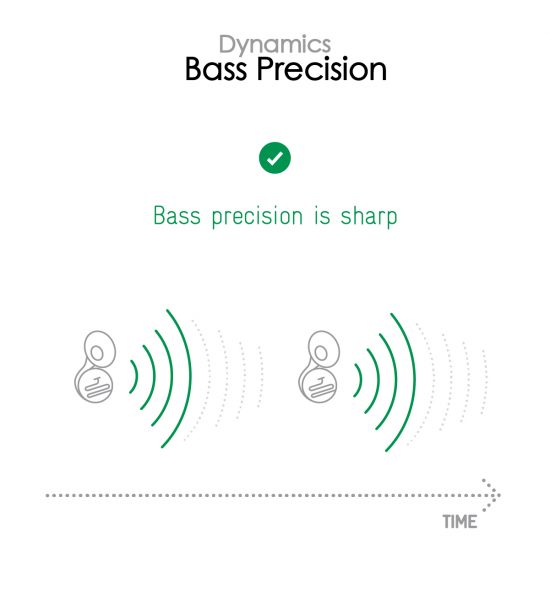

Spatial
Asus ROG Phone 6
162
The sub-attributes for spatial tests include pinpointing a specific sound's location, its positional balance, distance, and wideness.
The spatial attribute was another area where the Asus shines. The built-in speakers created a very wide sound scene in which individual sound sources were easy to locate. Realistic distance rendition meant that voices were perceived at their correct position in the audio field and a great sense of depth made for an immersive experience.

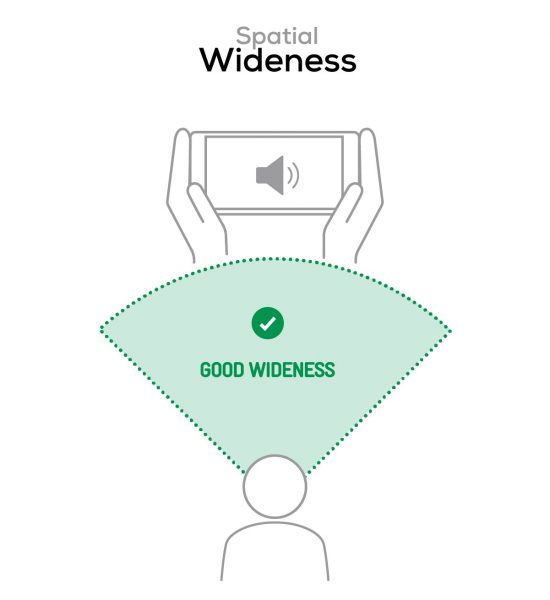

Volume
Asus ROG Phone 6
162
The Volume score represents the overall loudness of a smartphone and how smoothly volume increases and decreases based on user input.
In our volume tests, the ROG Phone 6 delivered a good performance. Maximum loudness was good for a smartphone, and adjustment steps were coherent across the entire volume range. Volume at the minimum setting was a little quiet but still adequate.
Here are a few sound pressure levels (SPL) measured when playing our sample recordings of hip-hop and classical music at maximum volume:
| Hip-Hop | Classical | |
| Asus ROG Phone 6 | 74.9 dBA | 72.6 dBA |
| Apple iPhone 14 Pro Max | 74 dBA | 71.1 dBA |
| Black Shark 5 Pro | 77.1 dBA | 70.1 dBA |

Artifacts
Asus ROG Phone 6
157
The Artifacts score measures the extent to which the sound is affected by various types of distortion. The higher the score, the less the disturbances in the sound are noticeable. Distortion can occur because of sound processing in the device and because of the quality of the speakers.
Audio Playback artifacts were dealt with well. Our testers only noticed some slight bass distortion and compression at the maximum volume setting, as well as occasional clicks when skipping through a music track. It was possible to accidentally occlude the speakers with hands while holding the phone normally, but the impact on audio quality was fairly low.
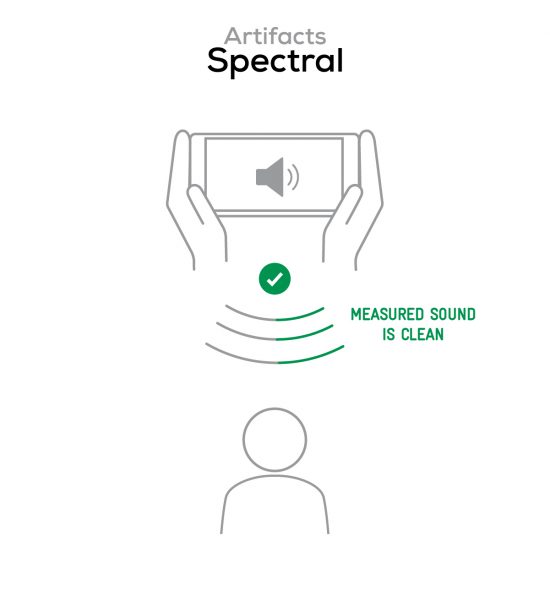
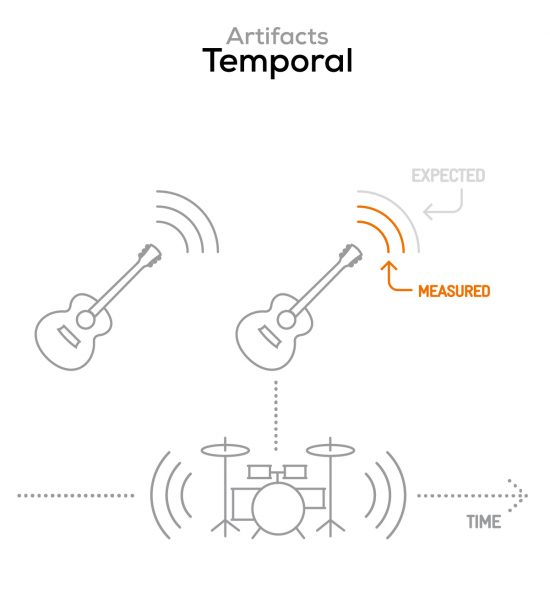
It represents the distortion and noise of the device playing our test signal (0 dB Fs, Sweep Sine in an anechoic box at 40 cm) at the device's maximum volume.
Recording
Asus ROG Phone 6
160
DXOMARK engineers test recording by evaluating the recorded files on reference audio equipment. Those recordings are done in our labs and in real-life conditions, using default apps and settings.

Timbre
Asus ROG Phone 6
147
The Timbre score represents how well a phone captures sounds across the audible tonal range and takes into account bass, midrange, treble, and tonal balance. It is the most important attribute for recording.
In audio recordings, tmbre was rich and bright, with an emphasis on the upper treble. When shooting video with the main camera, the audio track came with a natural tonal balance and bright sonority. Treble featured a striking brilliance that brought lifelike clarity to the recordings. In comparison, midrange seemed a little pale, especially the low-midrange, so it’s fair to say the ROG Phone 6’s brightness and clarity come at the expense of warmth and depth. This said, we’re nitpicking here, and timbre remained very consistent at high sound pressure levels, for example, when recording a concert. In this scenario, the tonal balance remained satisfying, and treble avoided sounding aggressive. Bass remained impressive, with good depth in low-end extension. However, depending on the content, it was also prone to pumping, and therefore less consistent.
Front camera video recordings sounded overall very similar to those made with the main camera, with the exception of treble, which was even more prominent, verging onto the excessive. Recordings still featured excellent timbre, but the excessive upper treble overpowered the low-midrange and bass even more than with the main camera. This could result in some discomfort to the listener with some types of content.
Recordings made with the memo app followed the same pattern. There was a noticeable boost of upper treble, and as volume increased, voices became more piercing when using the memo app in an urban environment. This excess of treble also had a negative impact on the tonal balance.

Dynamics
Asus ROG Phone 6
146
The Dynamics score measures the accuracy of changes in the energy level of sound sources, for example how precisely a voice's plosives (the p's, t's and k's, for example) are reproduced. The score also considers the Signal-to-Noise Ratio (SNR), for example how loud the main voice is compared to the background noise.
The ROG Phone 6 deliverd very good dynamics in recording. Envelope rendition was accurate across all use cases, with sharp attacks and precise plosives, even when recording concerts or similar events with high sound-pressure levels. Only bass precision can suffer a little in such extreme conditions — our testers noticed some pretty significant pumping — but the overall envelope for most instruments remained realistic.
Signal-to-noise ratio was pretty good when recording with the main and front cameras, but leaves some room for improvement. When using the memo app, things looked slightly different. The signal-to-noise ratio was reduced by a hissing background that was caused by the excessive treble mentioned earlier.
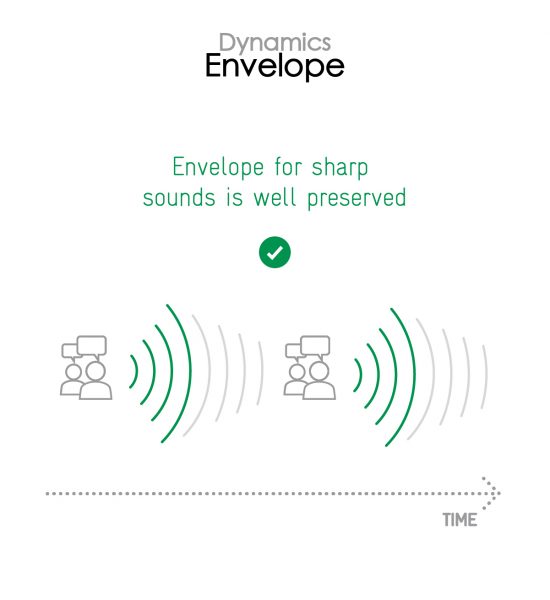
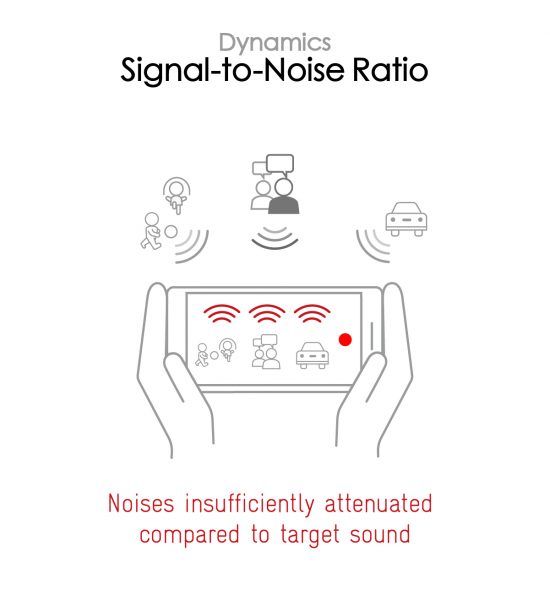

Spatial
Asus ROG Phone 6
159
The sub-attributes for spatial tests include pinpointing a specific sound's location, its positional balance, distance, and wideness on the recorded audio files.
The ROG Phone 6 recordings offered excellent wideness, even when recording selfie videos and holding the phone in portrait orientation. Within the wide stereo scene, it was very easy to locate individual sound sources, such as instruments in a concert and very good distance rendering in most use cases meant voices were perceived at the right distance. The latter was not true for recordings with the memo app, however. With this application, excessive upper treble made voices sound unrealistically close.
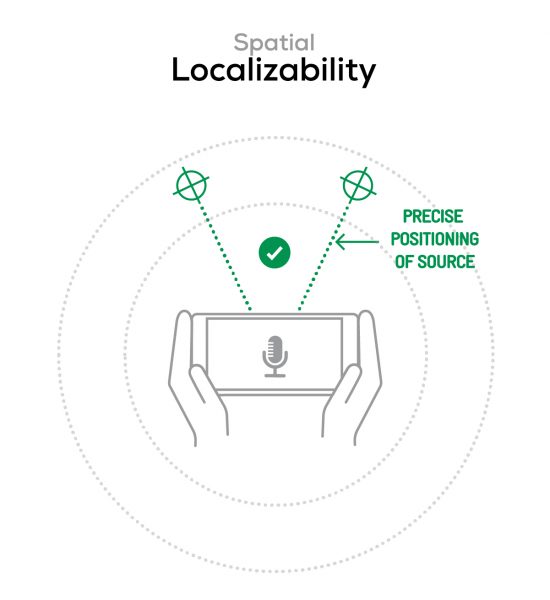
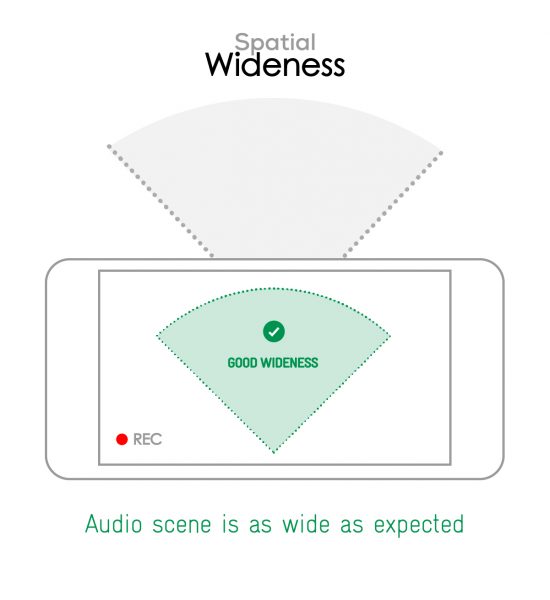

Volume
Asus ROG Phone 6
170
The Volume score represents how loud audio is normalized on the recorded files and the how the device handles loud environments, such as electronic concerts, when recording.
The Asus delivered very good loudness in recordings with the main and front cameras, as well as the memo app. However, at high recording volumes, we measured some distortion and compression.
Here are the sound levels recorded in the audio and video files, measured in LUFS (Loudness Unit Full Scale); as a reference, we expect loudness levels to be above -24 LUFS for recorded content:
| Meeting | Life Video | Selfie Video | Memo | |
| Asus ROG Phone 6 | -21.4 LUFS | -19.9 LUFS | -18.1 LUFS | -17.6 LUFS |
| Apple iPhone 14 Pro Max | -26 LUFS | -22.9 LUFS | -19.2 LUFS | -19.6 LUFS |
| Black Shark 5 Pro | -21.3 LUFS | -17.5 LUFS | -16.4 LUFS | -16.4 LUFS |

Artifacts
Asus ROG Phone 6
145
The Artifacts score measures the extent to which the recorded sounds are affected by various types of distortions. The higher the score, the less the disturbances in the sound are noticeable. Distortions can occur because of sound processing in the device and the quality of the microphones, as well as user handling, such as how the phone is held.
Our testers found some unwanted artifacts in the Asus ROG Phone 6’s audio recordings. When using the memo app or recording meetings, excessive treble resulted in some harsh sibilances. At high sound pressure levels, our testers observed some pumping, especially at the low end of the frequency spectrum. Microphone occlusions were not an issue on the Asus, but finger noises were quite noticeable in the recordings.
Wind noise reduction does a great job and recorded content remains intelligible most of the time, especially when not recording in a head-on wind. In strong wind voices might be partially covered but spoken words are mostly understandable.
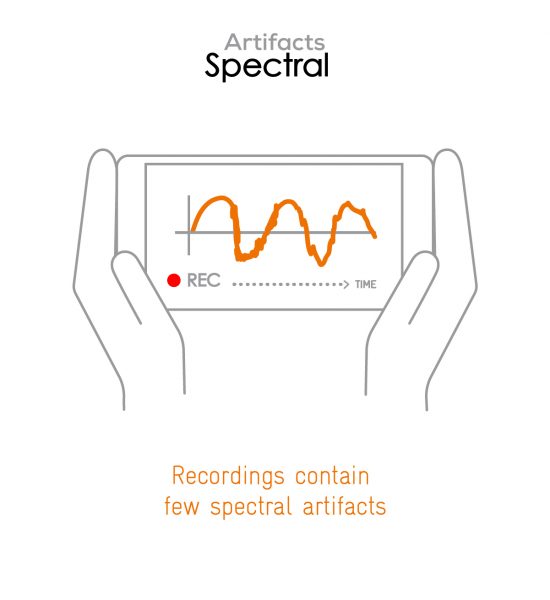
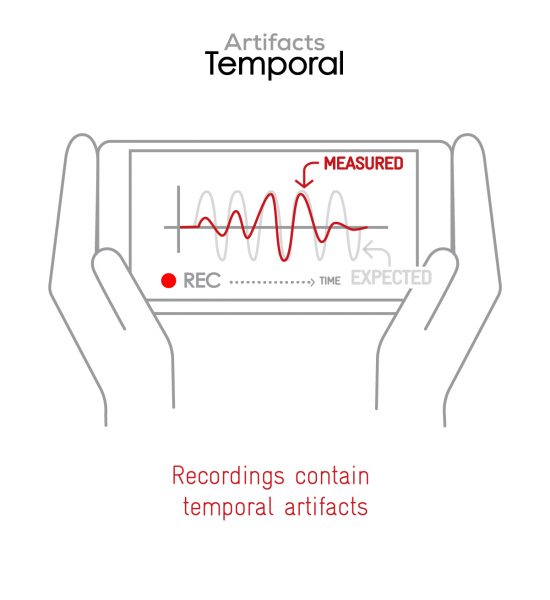
In this audio comparison, you can listen to the way this smartphone handles wind noise relative to its competitors:

Background
Asus ROG Phone 6
166
Background evaluates how natural the various sounds around a voice blend into the video recording file. For example, when recording a speech at an event, the background should not interfere with the main voice, yet it should provide some context of the surroundings.
The Asus does well for Background recording. Rich treble adds a lifelike dimension to the recordings but can be slightly over the top when using the front camera and with the memo app where the excess treble causes constant hissing and an unpleasant background noise. With loud noises in the foreground, we also observed some slight background pumping.
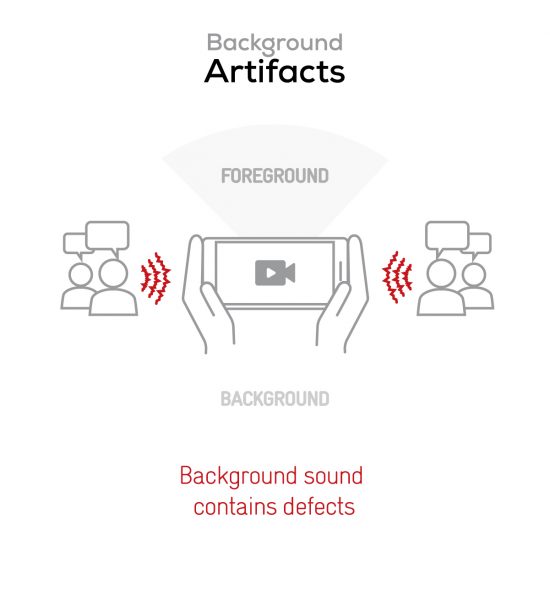
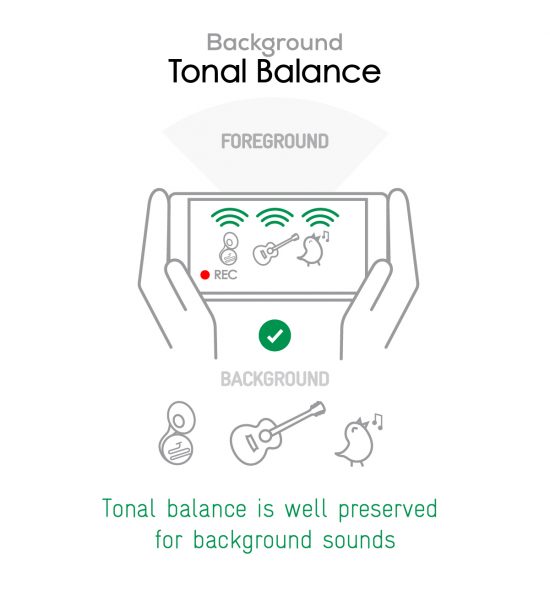



DXOMARK encourages its readers to share comments on the articles. To read or post comments, Disqus cookies are required. Change your Cookies Preferences and read more about our Comment Policy.